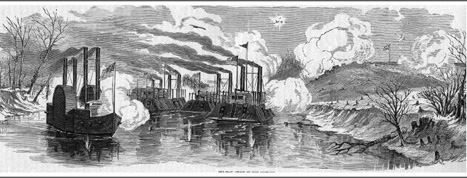
Fort Henry
Fort Henry, on the banks of the Tennessee River, had seen better days. An earthen fort, by February of 1862, it was already partially indundated, and the river threatened to flood the remainder of the fort. With outdated fortifications, it was no match for attacking Union forces, under the command of General Ulysses Grant.
The Confederates lacked the resources to adequately defend Kentucky. While the Confederate commander, General Albert Johnston, requested reinforcements, the Confederacy had none to spare.
Richmond did send General Beauregard, a response which, ironically, may have had the opposite of the desired effect. To match Beauregard, General Halleck, the Union Commander of the West, sent General Ulysses Grant, with a naval attachment, to investigate the western end of Johnstonís line.
Grant determined that Fort Henry was particularly vulnerable, with its earthen walls and outdated fortifications.
Grant landed his 12,000 troops on February 4th, placing one division on the high ground on the Kentucky side, while another division was sent along the east shore to prevent a Confederate escape.
On February 6th, the Union attack began. Naval commander Andrew Footeís seven gunboats began to bombard the fort, but before Grantís division could get into place, General Tilghman was able to effect an escape, sending most of his force to Fort Donelson before surrendering Fort Henry to the Union.
Both the Tennessee and Cumberland rivers were now open to the Union, and the Union had a new hero in General Grant.
 |
|
|
||
